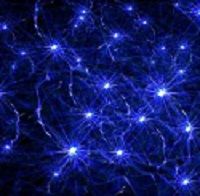Article
Surgery for Keeping Patients with Cerebral Cavernous Malformations Seizure-Free
Author(s):
Researchers discover patients with cerebral cavernous malformations who receive intensive evaluation pre-surgical evaluation are significantly more likely to be free of seizure postoperatively.

Vascular malformations that cause epileptic seizures in adults are seen fairly often in neurosurgical practices, approximately 10 to 15 percent of these malformations are cerebral cavernous malformations (CCMs). Among patients with CCMs, the risk for seizure development is roughly 1.5 to 2.4 percent per year, and even though CCM-induced seizures can be occasional and treatable, they are chronic or drug-resistant for 35 to 40 percent of patients.
Neurosurgeons typically consider resection of symptomatic CCM to prevent renewed symptomatic hemorrhage and subsequent persistent neurologic deficits, and to cure structural drug-resistant epilepsy (DRE). Microsurgical removal of CCM can result in excellent outcomes compared to conservative treatment with antiepileptic drugs (AEDs) or other treatment modalities; however, published studies have provided very few specifics about techniques and specific patient populations.
Using the Bonn neurosurgical index database and the Bonn epilepsy surgery database, researchers at Bonn University set out to determine if seizure outcomes in patients who undergo CCM procedures differ by formal pre-surgical evaluations, epilepsy type, or CCM localization.

The data included all adult CCM cases reported between 1988 and 2010 (n=118). Seventy-six of those patients had DRE and 20 patients had chronic seizures. Overall, 57 percent of patients had temporally located symptomatic CCM. After surgery, 84 percent of the patient cohort was free of seizure, though two patients in the DRE group developed new, permanent deficits and were not seizure-free.
Patients who underwent intensive evaluation and extensive resection were significantly more likely to be seizure-free postoperatively. Just as experts have suspected that lesionectomy alone is insufficient in those patients, the study found that lesionectomy with resection had better outcomes, but the numbers were too small to be significant.
The study authors concluded that surgical therapy of CCM-associated seizures and epilepsy can be successful when surgeons use pre-surgical evaluation to select their techniques. The researchers also indicated that early surgical intervention in CCM-associated epilepsy may prevent clinical decline.




